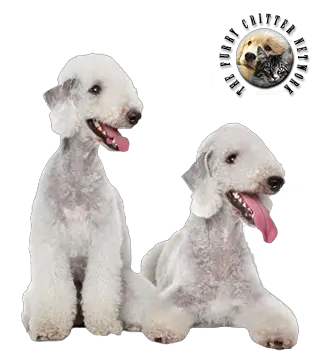Breed Standard
Head: Pear-shaped or wedge-shaped. Narrow, deep and rounded, covered with abundant silky, almost white hair. No stop. Long, tapering jaws.
Ears: Moderate size, set on low and hanging flat against the cheeks. Thin leather, velvety texture; covered with short, fine hair, with a silky, white tassel at the tip.
Eyes: Small, triangular appearance. Blues have dark eyes; Blue and tans are less dark with amber lights; browns and sandies have hazelnut color eyes.
Body: Slightly longer than tall. Muscular and flexible. Long neck without dewlap. Deep, fairly broad chest. Flat-ribbed. Arched loin. Back arching over the loin.
Tail: Set low, moderate length; thick at the root and tapering toward the gently curved tip. Never carried over the back.
Hair: Thick, crisp but not wiry. Tendency to curl, particularly on the head and face.
Coat: Blue, liver or sandy with or without tan. Darkest colors are preferred. Blues and blue and tans must have a black nose. Livers and sandies must have a brown nose.
Size: Approx. 40,6 cm (16 in).
Weight: 8 to 10,5 kg (18-23 lb).
History
The Bedlington Terrier was developed in England in the thirteenth century in Bedlington, a small village near Rothbury in Northumberland. Its ancestors include the Dandie Dinmont Terrier, the Otterhound and the Whippet. This breed was first used to hunt vermin and fox. Later, they worked in the mines clearing rats from the galleries. The Bedlington Terrier was recognized by The Kennel Club in 1873.
Originally known as the Rothbury or Rodbury Terrier, the name Bedlington Terrier was not applied to the breed until 1825, but some dogs have pedigrees that can be traced back as far as 1782. The first dog show with a class for Bedlington Terriers was held in 1870 at Bedlington. Bedlington Terriers shown at early shows were frequently dyed to improve the look of their fur. In 1948, a Bedlington Terrier known as Rock Ridge Night Rocket won best in show at the Westminster Kennel Club Dog Show.
Behavior
Bedlingtons are sharp and plucky. Their bark has been called hound-like and has been compared to the firing of a machine gun. A fast dog with high endurance, the Bedlington Terrier is just as quick in water as it is on land, and their swimming speed rivals that of the Newfoundland. Bedlington Terriers "have pace enough to keep up with the ordinary speed of a horse." Because of the Whippet in their lineage, they have a tendency to bolt. Their versatility has been praised, with some dogs willing to "be a house-dog, a gun-dog, a rat-dog, a badger-dog, or, if needed, to bolt a fox..."
They are also known for their intelligence and tenacity when it comes to taking on vermin. Bedlingtons are quite fond of fighting, and are prone to jealousy when around other dogs. One man stated that "this dog was about fit to kill any other dog of his weight" and compared him to the fighting dogs used in dog fighting. They have also been used in dog fighting.
However, both the AKC and the ASPCA call the breed "mild" and "gentle" and recommends it as being good with children. PetFinder says the breed is soft in temperament, companionable, demonstrative, loyal, and a quiet housedog. Although the breed may chase small animals outside, it is accepting of them inside. Playful and cheerful, the breed can be high-strung and excitable, and is prone to being headstrong. The New Zealand Kennel Club warns against keeping them with dogs that have dominant personalities, "as once challenged they are terrifying fighters, despite their gentle appearance", but otherwise the breed is good with other dogs
The Bedlington Terrier makes a good house dog, but he must be walked daily. Weekly brushing is required. This breed should be professionally groomed two or three times per year.
Function
Ratter, Guard Dog, Pet.
Health
Median longevity of Bedlington Terriers, based on two recent UK surveys, is about 13.5 years, which is longer than for purebred dogs in general and longer than most breeds similar in size. The longest-lived of 48 deceased dogs in a 2004 UK Kennel Club survey was 18.4 years. Leading causes of death among Bedlington Terriers in the UK were old age (23%), urologic (15%), and hepatic (12.5%). The leading "hepatic" cause of death was copper toxicosis. Dogs that died of liver diseases usually died at a younger age than dogs dying of most other causes.
Bedlington Terrier owners in the UK reported that the most common health issues among living dogs were reproductive, heart murmur, and eye problems such as epiphora, retinal dysplasia, and cataracts. Bedlingtons seem to be more prone to these eye diseases than other breeds. They also have a high incidence of kidney problems. Copper toxicosis occurred among about 5% of living dogs. Inbreeding is a concern. Reputable breeders will conduct DNA testing of all litters and will not allow pups which carry the copper toxicosis gene to be bred, a practice which has significantly reduced the incidence of this disease in the breed. Excepting these problems, Bedlingtons are generally a very healthy breed.






